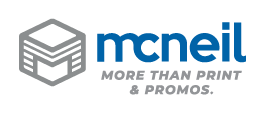Folding & Miniature Folding
Folding and Miniature Folding: A Quick Guide
Folding is a printing and finishing technique that transforms a flat sheet into a compact and organized document. Miniature folding takes this concept further, creating small-sized folded materials often used for intricate designs or informational brochures.
Choosing the right folding style and paper type can significantly enhance the effectiveness of your printed pieces. Our experts can help guide you on how to choose the most suitable folding techniques for your specific needs. Request a Custom Quote today!
Basic Folding Techniques:
Bi-Fold:
• The sheet is folded in half, creating two panels.
• Commonly used for brochures, cards, or invitations.
Tri-Fold:
• The sheet is divided into three sections, folded like an accordion.
• Ideal for brochures, menus, and informational materials.
Gate Fold:
• Both sides of the sheet fold towards the center.
• Creates a gate-like opening and is effective for presentations.
Z-Fold:
• The sheet is folded into a 'Z' shape.
• Useful for presentations or information that unfolds in stages.
Miniature Folding:
Accordion Fold:
• Similar to a tri-fold but on a smaller scale.
• Ideal for compact informational materials.
Map Fold:
• The sheet is folded into smaller sections, like unfolding a map.
• Suitable for presenting information in a step-by-step manner.
Double Parallel Fold:
• The sheet is folded in half and then folded again parallel to the first fold.
• Creates a compact folded piece with multiple panels.
Advantages of Folding and Miniature Folding:
Space Efficiency:
• Condenses information into a smaller, organized format.
Economical for Short Runs:
• While cost-effective for small to medium runs, it can become pricier for very large quantities.
Versatility:
• Various folding techniques cater to different content needs.
Portability:
• Compact size is ideal for handouts, promotions, and pocket-sized materials.
Enhanced Design:
• Folding adds an extra dimension to design, creating visual interest.
Information Hierarchy:
• Allows for organized presentation of information in a sequential manner.
Considerations:
Paper Quality:
• Choose a paper type suitable for folding without cracking.
Content Planning:
• Plan your content to fit the folding style for optimal presentation.
Design Consistency:
• Maintain design consistency across panels for a cohesive look.
Applications:
Brochures:
• Conveying detailed information in a compact format.
Leaflets:
• Handouts at events or as supplementary material.
Pocket Guides:
• Small informational booklets for quick reference.
Product Manuals:
• Condensing information for ease of use.
Promotional Materials:
• Pocket-sized promotions for marketing campaigns.




